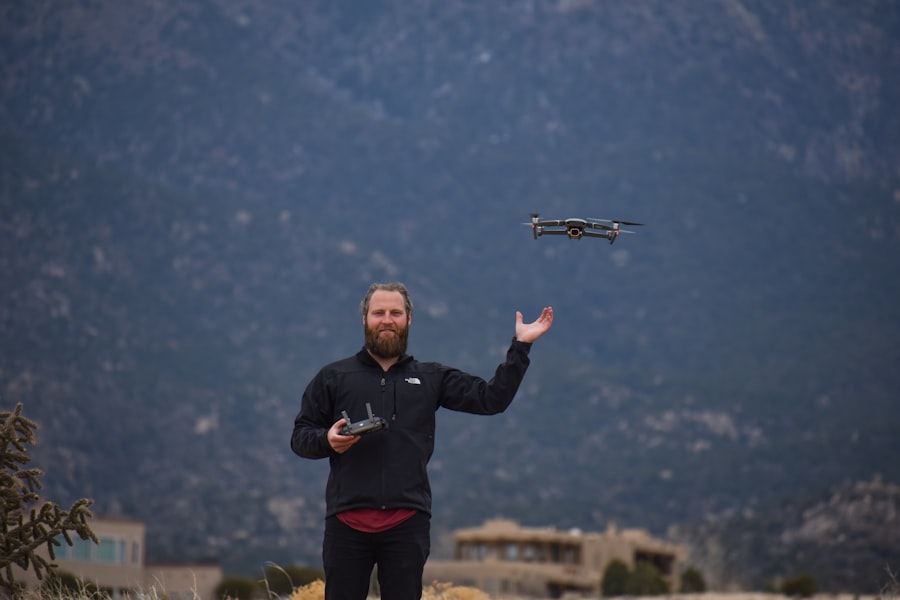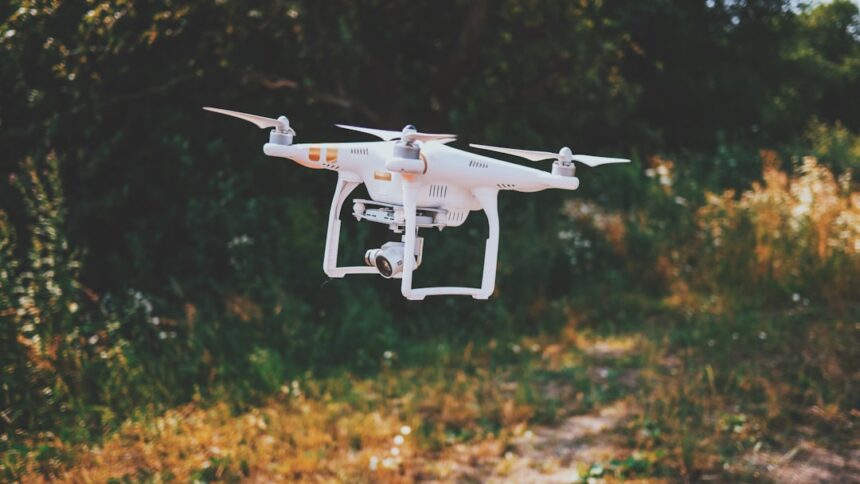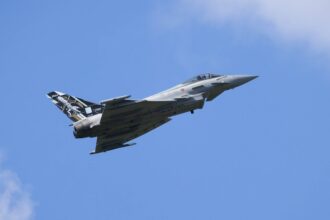In recent years, the proliferation of drones has transformed various sectors, from recreational use to commercial applications and even military operations. However, this rapid expansion has also raised significant concerns regarding security and privacy. Anti-drone systems have emerged as a critical response to these challenges, designed to detect, track, and neutralize unauthorized or malicious drones.
These systems are increasingly vital for protecting sensitive areas such as airports, military bases, and public events from potential threats posed by rogue drones. As the technology behind drones continues to evolve, so too must the methods employed to counteract them. Anti-drone systems encompass a range of technologies, including radar, radio frequency jamming, and kinetic interception methods.
The effectiveness of these systems relies heavily on their ability to quickly identify and respond to drone threats. As the landscape of drone technology becomes more sophisticated, the need for advanced solutions has never been more pressing. This is where artificial intelligence (AI) comes into play, offering innovative approaches to enhance the capabilities of anti-drone systems and address the challenges posed by increasingly autonomous and intelligent drones.
Key Takeaways
- AI is revolutionizing anti-drone technology by enhancing detection capabilities and improving response time.
- The integration of AI in anti-drone systems is crucial for countering the evolving tactics of rogue drones.
- AI brings advantages such as real-time threat assessment and autonomous decision-making, but also has limitations in terms of adaptability and ethical considerations.
- Future developments in AI for anti-drone systems will focus on increasing accuracy, reducing false alarms, and addressing legal and ethical concerns.
- The ongoing evolution of AI in anti-drone systems highlights the importance of continuous training and testing to stay ahead of emerging threats.
The Rise of AI in Anti-Drone Technology
The integration of artificial intelligence into anti-drone technology marks a significant advancement in the field. AI has the potential to revolutionize how these systems operate by enabling them to learn from data, adapt to new threats, and improve their overall effectiveness. As drones become more autonomous and capable of complex maneuvers, traditional detection and neutralization methods may struggle to keep pace.
AI-driven solutions can analyze vast amounts of data in real-time, allowing for quicker and more accurate responses to potential threats. The rise of AI in anti-drone technology is not merely a trend; it reflects a broader shift towards automation and intelligent systems across various industries. With the increasing sophistication of drone technology, including enhanced flight capabilities and advanced navigation systems, the need for equally advanced countermeasures has become paramount.
AI can provide these countermeasures by leveraging machine learning algorithms that continuously improve detection accuracy and response strategies based on historical data and real-time inputs.
How AI Enhances Detection Capabilities

One of the most significant advantages of incorporating AI into anti-drone systems is its ability to enhance detection capabilities. Traditional detection methods often rely on fixed parameters and can struggle to identify drones operating in complex environments or employing evasive tactics. AI algorithms can analyze patterns in drone behavior, distinguishing between benign and potentially harmful activities with greater precision.
This capability is particularly crucial in crowded urban areas where distinguishing between commercial drones and potential threats can be challenging. Moreover, AI can process data from multiple sensors simultaneously, integrating information from radar, cameras, and other detection technologies. This multi-sensor fusion allows for a more comprehensive understanding of the operational environment, improving situational awareness for operators.
By utilizing advanced image recognition techniques, AI can identify specific drone models and assess their flight paths, enabling proactive measures to be taken before a potential threat materializes. This level of sophistication in detection not only enhances security but also minimizes false positives, allowing operators to focus on genuine threats.
AI’s Role in Improving Response Time
| Metrics | Response Time Improvement |
|---|---|
| Customer Support | 30% faster response time |
| Medical Diagnosis | 50% reduction in diagnosis time |
| Manufacturing Processes | 20% decrease in production time |
| Emergency Services | 40% quicker response time |
In the realm of anti-drone technology, response time is critical. The faster an anti-drone system can detect and neutralize a threat, the less likely it is that damage will occur. AI plays a pivotal role in streamlining response times by automating decision-making processes and optimizing operational protocols.
With AI-driven systems, the time between detection and action can be significantly reduced, allowing for immediate countermeasures against unauthorized drones. AI algorithms can analyze incoming data in real-time, assessing the level of threat posed by a detected drone and determining the most appropriate response strategy. This rapid assessment capability enables operators to react swiftly without being bogged down by manual analysis or decision-making delays.
Furthermore, AI can predict potential drone trajectories based on historical flight patterns and environmental factors, allowing for preemptive actions that can neutralize threats before they reach critical areas.
AI’s Impact on Counter-Drone Tactics
The incorporation of AI into anti-drone systems has fundamentally altered counter-drone tactics. Traditional methods often relied on brute force or simple jamming techniques that could disrupt drone operations but did not necessarily neutralize the threat effectively. With AI’s analytical capabilities, counter-drone tactics have evolved to become more strategic and nuanced.
For instance, AI can facilitate targeted interventions that minimize collateral damage while effectively neutralizing threats. Additionally, AI can assist in developing adaptive tactics that evolve alongside drone technology. As drones become more sophisticated, so too must the strategies employed to counter them.
AI-driven systems can learn from each encounter with a drone, refining their tactics based on what has proven effective or ineffective in previous situations. This continuous learning process ensures that anti-drone systems remain relevant and effective in an ever-changing technological landscape.
The Integration of AI in Anti-Drone Systems

Integrating AI into anti-drone systems involves a multifaceted approach that encompasses hardware, software, and operational protocols. The hardware component includes advanced sensors capable of collecting high-resolution data on drone activity, while the software aspect focuses on developing robust algorithms that can process this data efficiently. The successful integration of these elements requires collaboration between engineers, data scientists, and security experts to create a cohesive system that operates seamlessly.
Moreover, the integration process must consider interoperability with existing security infrastructure. Many organizations already employ various security measures; thus, new AI-driven anti-drone systems must be compatible with these frameworks to ensure comprehensive protection. This integration not only enhances overall security but also allows for a more streamlined response to potential threats by consolidating various security measures into a unified system.
Advantages and Limitations of AI in Anti-Drone Technology
While the advantages of incorporating AI into anti-drone technology are substantial, it is essential to acknowledge the limitations as well. On one hand, AI enhances detection accuracy, improves response times, and enables adaptive counter-drone tactics. These benefits contribute to a more effective defense against unauthorized drones and help mitigate risks associated with their use in sensitive areas.
On the other hand, reliance on AI also presents challenges. For instance, the effectiveness of AI algorithms depends heavily on the quality and quantity of data used for training. Inadequate or biased data can lead to inaccurate predictions or misidentifications of threats.
Additionally, as with any technology reliant on machine learning, there is always a risk of adversaries developing countermeasures specifically designed to exploit weaknesses in AI-driven systems. Therefore, while AI offers significant advancements in anti-drone technology, it is crucial for developers and operators to remain vigilant about its limitations and continuously refine their approaches.
Future Developments and Trends in AI for Anti-Drone Systems
The future of AI in anti-drone systems is poised for exciting developments as technology continues to advance at an unprecedented pace. One emerging trend is the increased use of collaborative networks where multiple anti-drone systems communicate with each other to share data and insights in real-time. This collaborative approach can enhance situational awareness across broader areas and improve overall response effectiveness.
Another anticipated development is the integration of advanced predictive analytics into anti-drone systems. By leveraging vast datasets from various sources—such as historical drone activity patterns and environmental conditions—AI can forecast potential threats before they materialize. This proactive approach could revolutionize how security personnel prepare for and respond to drone-related incidents.
Ethical and Legal Considerations of AI in Anti-Drone Technology
As with any technology that involves surveillance and security measures, ethical and legal considerations surrounding AI in anti-drone systems are paramount. The deployment of such technologies raises questions about privacy rights and civil liberties. Striking a balance between ensuring public safety and respecting individual rights is a complex challenge that requires careful consideration by policymakers and stakeholders.
Furthermore, there are concerns regarding accountability when AI-driven systems make decisions autonomously. In cases where an anti-drone system mistakenly identifies a benign drone as a threat or takes inappropriate action against an innocent party, determining liability becomes complicated. Establishing clear legal frameworks that govern the use of AI in anti-drone technology is essential to address these concerns while fostering innovation in this rapidly evolving field.
The Importance of AI Training and Testing for Anti-Drone Systems
To maximize the effectiveness of AI in anti-drone systems, rigorous training and testing protocols are essential. Training involves feeding algorithms with diverse datasets that encompass various drone types, flight patterns, and environmental conditions to ensure robust performance across different scenarios. This comprehensive training process helps mitigate biases that could lead to misidentification or ineffective responses.
Testing is equally critical; it allows developers to evaluate how well AI-driven systems perform under real-world conditions before deployment. Simulated environments can be created to assess system responses to various drone behaviors while ensuring safety during testing phases. Continuous evaluation post-deployment is also necessary to adapt to new threats as they arise and refine algorithms based on operational feedback.
The Ongoing Evolution of AI in Anti-Drone Systems
The evolution of artificial intelligence in anti-drone systems represents a significant leap forward in addressing the challenges posed by modern drone technology. As drones become increasingly sophisticated, so too must the methods employed to counteract them. The integration of AI enhances detection capabilities, improves response times, and transforms counter-drone tactics into more strategic approaches.
However, this evolution is not without its challenges; ethical considerations and limitations must be carefully navigated as technology advances. The future promises exciting developments as collaborative networks emerge and predictive analytics take center stage in enhancing security measures against unauthorized drones. Ultimately, the ongoing evolution of AI in anti-drone systems will play a crucial role in shaping how society navigates the complexities of drone technology while ensuring safety and security for all.
In recent years, the integration of artificial intelligence in anti-drone systems has become a pivotal development in enhancing security measures. AI technologies are being leveraged to improve the detection, tracking, and neutralization of unauthorized drones, thereby safeguarding sensitive areas from potential threats. For a deeper understanding of how AI is revolutionizing defense mechanisms, you can explore a related article on this topic by visiting inthewarroom.
com/’>In The War Room. This resource provides valuable insights into the advancements and applications of AI in modern security systems.
FAQs
What is the role of AI in anti-drone systems?
AI plays a crucial role in anti-drone systems by enabling real-time detection, tracking, and neutralization of unauthorized drones. AI algorithms can analyze drone behavior patterns and distinguish between friendly and hostile drones, allowing for more effective countermeasures.
How does AI enhance the effectiveness of anti-drone systems?
AI enhances the effectiveness of anti-drone systems by continuously learning and adapting to new drone threats. This allows for quicker and more accurate responses to potential security breaches, ultimately improving the overall protection of sensitive areas from unauthorized drone incursions.
What are some AI-powered features in anti-drone systems?
AI-powered features in anti-drone systems include advanced image recognition, machine learning algorithms, and autonomous decision-making capabilities. These features enable the system to autonomously identify and respond to potential drone threats in real time, without human intervention.
Can AI help in differentiating between drones and other flying objects?
Yes, AI can help in differentiating between drones and other flying objects by analyzing their flight patterns, size, and other characteristics. This allows the anti-drone system to accurately identify and respond to potential threats, while minimizing false alarms caused by non-threatening objects.
How does AI contribute to the future development of anti-drone technology?
AI contributes to the future development of anti-drone technology by enabling the creation of more sophisticated and autonomous systems. As AI continues to advance, anti-drone systems will become more adept at countering evolving drone threats, ultimately enhancing security measures in various sectors.




